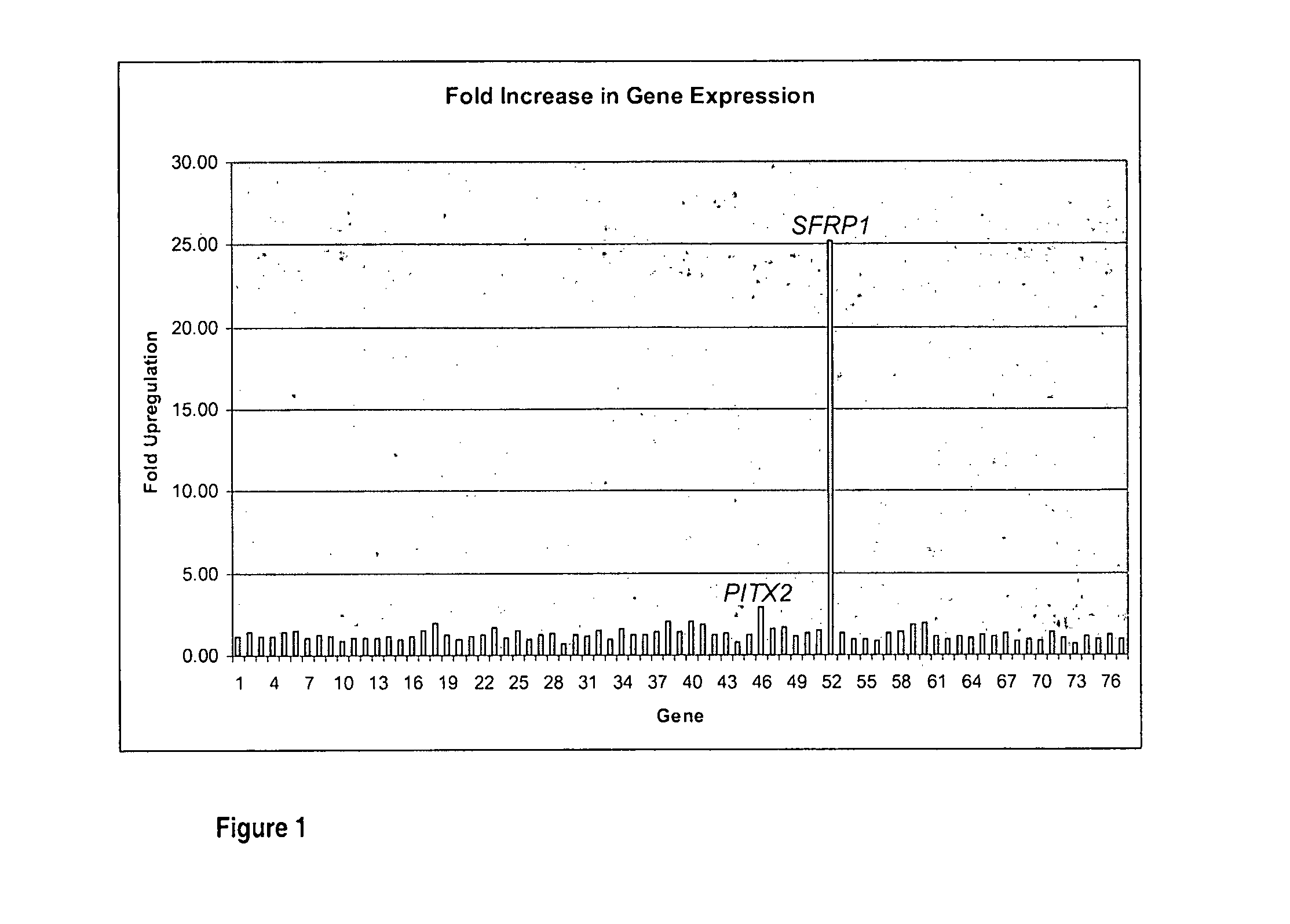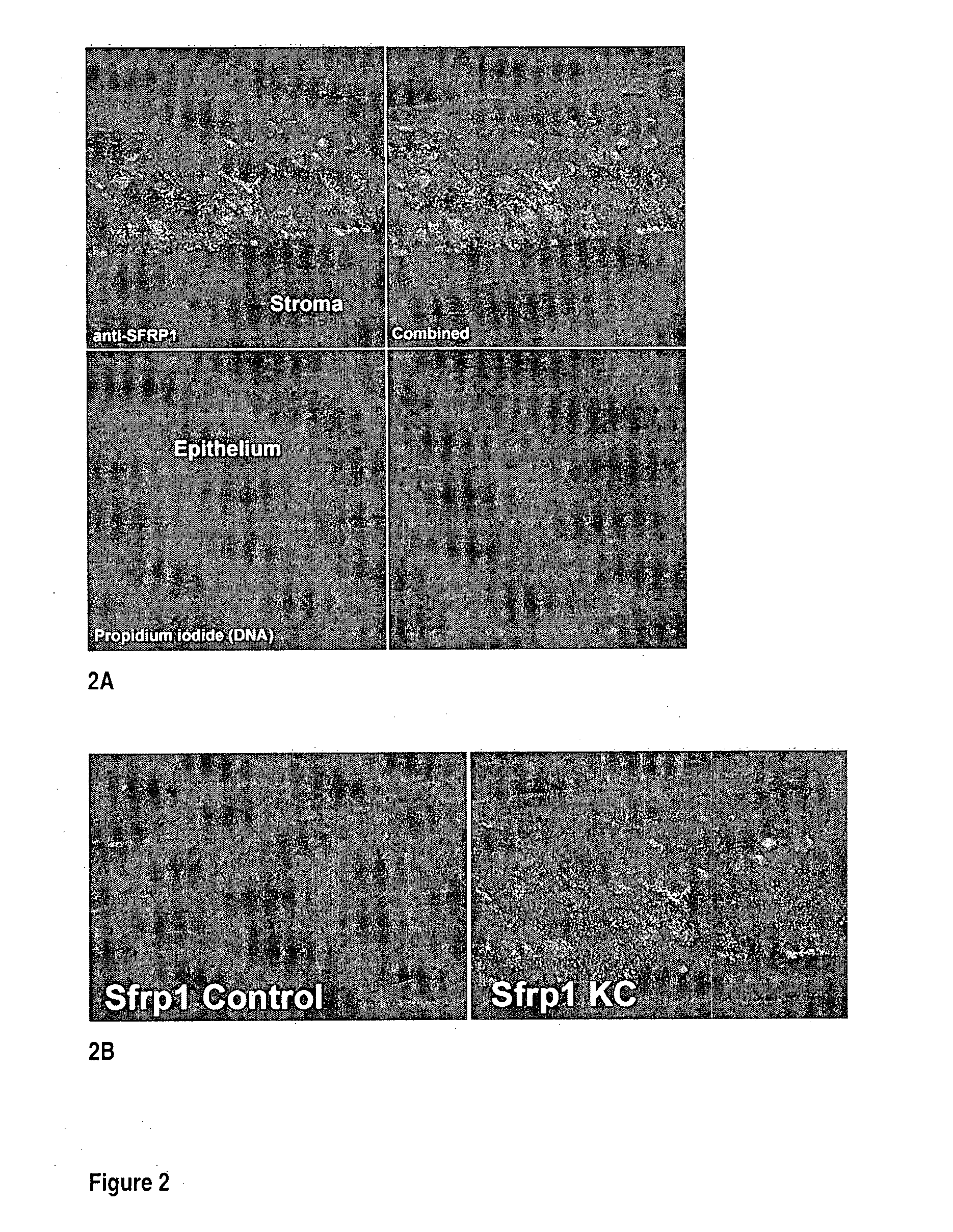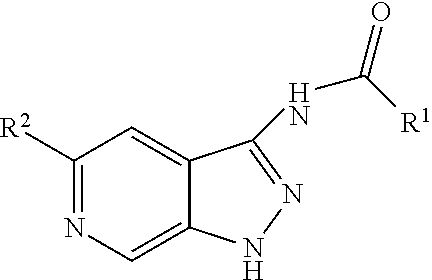Diagnostic and therapeutic methods for corneal ectasia following refractive surgery, keratoconus or pellucid degeneration
a technology of corneal ectasia and refractive surgery, applied in the direction of biological material analysis, sense disorder, drug composition, etc., can solve problems such as difficult diagnosis
- Summary
- Abstract
- Description
- Claims
- Application Information
AI Technical Summary
Benefits of technology
Problems solved by technology
Method used
Image
Examples
example 1
Quantification of the change of Gene Expression in the Corneal Epithelium of Keratoconus Subjects
[0130]Samples of corneal epithelium were collected from KC patients undergoing corneal transplantation and 6 age-matched controls undergoing photorefractive keratectomy (PRK). The clinical characteristics of the KC patients including age, best spectacle corrected visual acuity (BSCVA), mean keratometry and rate of corneal steepening were documented at the time of surgery and are set out in Table 2.
[0131]All keratoconus subjects exhibited poor vision which was not correctable by contact lenses. The rate of progression of keratoconus in the subjects was assessed by quantifying the amount of corneal steepening over time between assessments.
[0132]Tetracaine 1% (Minims) and Chloramphenicol 0.5% (Minims) eye drops were administered every ten minutes for 30 minutes prior to surgery. An 8 mm trephine was used to mark the epithelial surface and an 8 mm diameter of central epithelium was removed w...
example 2
Diagnosis of Keratoconus Using expression of SFRP1
[0158]Subjects for diagnosis may be selected on the basis of previous clinical diagnosis, for example by corneal topography, where the methods described herein may provide a confirmatory diagnosis and may identify whether the condition will progress rapidly or slowly. In addition, subjects intending to undergo refractive surgery, such as LASIK, may be screened. This diagnostic test may also be used for screening donor corneas prior to corneal transplantation procedures. This diagnostic test may also be carried out on subjects following refractive surgery in which there is suspected corneal ectasia.
[0159]A sample of full thickness epithelium of approximately 1 mm2 area from one or both corneas is taken under local anaesthetic using a sterile blade or scraper. Corneal epithelial samples are taken from the region overlying any corneal topographical anomaly, or from the corneal periphery. A similarly sized sample of conjunctival epitheli...
example 3
Treatment of Keratoconus, of Pellucid Marginal Degeneration or of Corneal Ectasia Following refractive Surgery
[0163]Subjects are diagnosed with keratoconus, pellucid marginal degeneration or corneal ectasia following refractive surgery using the diagnostic methods described herein and / or using standard diagnostic criteria. For example, a keratoconic subject with loss of best spectacle corrected vision of at least 80% would be eligible for the treatment.
[0164]In certain methods, subjects are topically administered a sterile aqueous solution of an agent which comprises neutralising antibodies to SFRP1 polypeptide to the corneal surface. In other methods, the agent comprises antisense molecules to SFRP1 or RNAi to SFRP1 and is administered to the eye using the general methods described in WO 2005 / 053600.
[0165]This administration may be formulated as aqueous eye drops, gels or creams, or may be provided in a depot such as a hydrogel lens which substantially covers the corneal surface or...
PUM
| Property | Measurement | Unit |
|---|---|---|
| time | aaaaa | aaaaa |
| time | aaaaa | aaaaa |
| diameter | aaaaa | aaaaa |
Abstract
Description
Claims
Application Information
 Login to View More
Login to View More - R&D
- Intellectual Property
- Life Sciences
- Materials
- Tech Scout
- Unparalleled Data Quality
- Higher Quality Content
- 60% Fewer Hallucinations
Browse by: Latest US Patents, China's latest patents, Technical Efficacy Thesaurus, Application Domain, Technology Topic, Popular Technical Reports.
© 2025 PatSnap. All rights reserved.Legal|Privacy policy|Modern Slavery Act Transparency Statement|Sitemap|About US| Contact US: help@patsnap.com



